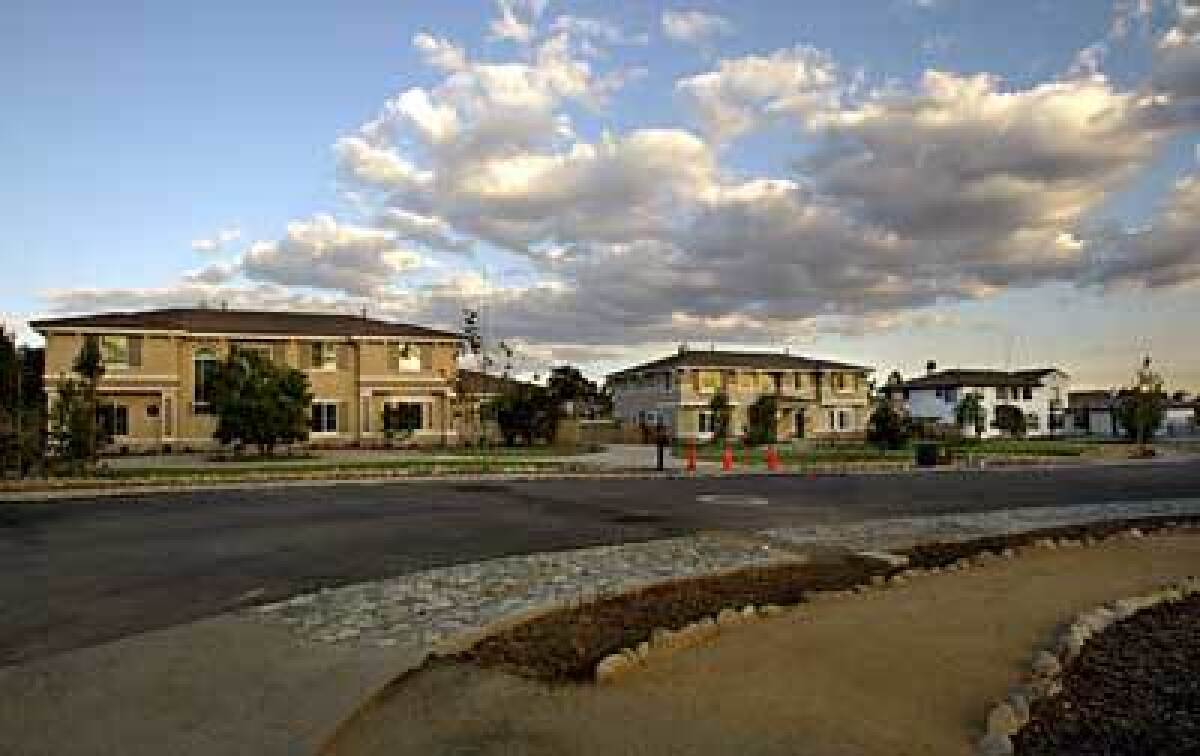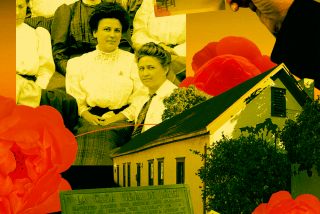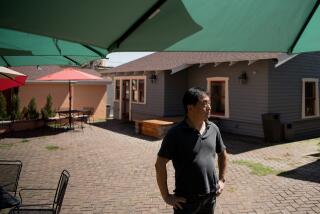Culture and Neutra in Claremont

Over the decades, the cultural center for Padua Hills has been an adobe-style theater hidden under mature olive trees at the top of Via Padova, which winds through the foothills of the San Gabriel Mountains in northeast Claremont. The eaves of the 75-year-old structure were charred a year ago when the Grand Prix fire marched across the hillsides.
Beginnings
A group of local citizens joined together in the late 1920s and purchased about 2,000 acres of hillside land. One member, Sarah Bixby Smith, named the area Padua Hills because it reminded her of Mt. San Antonio in Italy, which overlooks the town of Padua.
During the next few years, the investors discussed several uses for the Padua property. By 1930, they had decided to build a theater for the local Community Players. Padua Hills Inc. was formed, and Herman H. Garner was selected to head the new organization.
The Community Players fell on tough times in the Great Depression. But in 1937 Garner’s wife, Bess, had the idea of using the theater as a “dinner theater” for the Mexican Players, a group of waiters and waitresses of Mexican descent who worked in the theater’s dining room and wanted to perform folk plays and offer authentic music and dance from different regions of Mexico. The Mexican Players continued performing until the theater closed in 1974.
The building and surrounding hillsides were donated to Pomona College — Herman Garner’s alma mater — but later sold to the city of Claremont as part of a deal to set aside land for a wilderness park and pave the way for residential development.
Today, the city leases the property to a catering service that runs wedding receptions at the hilltop site. The Spanish Colonial house the Garners lived in is still standing in Memorial Park in Claremont’s village district.
Drawing card
Rustic Padua Hills is bounded on its western side by the 1,400-acre Claremont Hills Wilderness Park, which has hiking trails and bicycle paths. Farther up Mt. Baldy Road, past Padua Hills, there’s a trout pond and ski slopes on the 10,064-foot-high Mt. Baldy.
Modernist architect Richard Neutra, who designed a home in the community, influenced the style of many of the single-family homes in Padua Hills. His homes have huge windows with floor-to-ceiling glass, making it appear that the heavily wooded hillsides extend inside.
In the early 1960s, Padua Hills resident Domingo Paglia went to work for Neutra. When the Neutra-designed house became available for $400,000 in 1999, the 71-year-old retired architect and his wife jumped at it.
“We bid on the house without seeing it,” Paglia said.
Wildlife also is a feature of the community. Sightings of a bear and her two cubs have been reported.
Insider’s view
For decades, Padua Hills was an artists’ colony that promoted arts, culture and entertainment at the theater. Claremont is working with preservationists to raise nearly $2 million in grants to renovate the dinner theater and attract a multicultural troupe to the spot. About a quarter of the money raised has come from the city, California cultural and historical endowments and the J. Paul Getty Trust.
Money is needed for repairing the fire damage, as well as for electrical rewiring, fire sprinklers, alarms, emergency lighting, seismic retrofitting and modernization of the theater’s stage and dinner area where performances were held.
A handful of homes burned in Padua Hills during last fall’s fires, including one built by the late Millard Sheets, a Pomona-born artist who gained notoriety for mosaics and murals on Home Savings & Loan Assn. buildings in the Los Angeles area.
Good news, bad news
Million-dollar homes are being built by Dallas-based Centex Corp. on the hillside just below Padua Hills where lemon and orange groves once stood. Instead of darkness at night, residents now see lights from the mansions and a blinking red traffic light. Centex has sold 37 of the planned 125 homes on half-acre lots in its Stone Canyon Preserve subdivision.
Claremont also is moving forward with plans to build a youth sports park along Mt. Baldy Road just a block away from the turnoff to Padua Hills. The northeast section of the city is short on soccer fields, but the residents are vocal in their opposition to fields being built that will have floodlights.
Stock report
Single-family homes rarely come on the market in the hillside community, which is part of Claremont’s 91711 ZIP Code. In the last three years, there have been 11 single-family homes for sale in Padua Hills, according to the Multiple Listing Service. Ten homes have been sold for $340,000 to $675,000. The single-family home currently for sale lists at $1.09 million and has been on the market for more than two months.
Report card
Claremont Unified School District has more than 6,300 students. Residents in the northeastern community live within the boundaries for Mountain View Elementary, which had a 2003 Academic Performance Index score of 763. El Roble Intermediate School scored 770, and Claremont High, 763.
Historical values
Single-family detached resales for the entire 91711 ZIP Code:Year...Median Price
1990...$240,0001995...$186,000
2000...$251,000
2003...$325,000
2004*...$489,000
*Year to dateSources: DataQuick Information Systems; Claremont Heritage Assn.; Claremont Unified School District, https://www.cusd.claremont.edu ; city of Claremont, https://www.ci.claremont.ca.us ; https://www.stonecanyonpreserve.com ; https://www.mtbaldy.com ; and Paddy Slater, author of “Padua Hills Theatre.”






